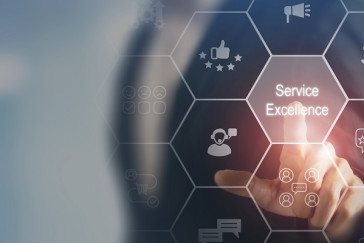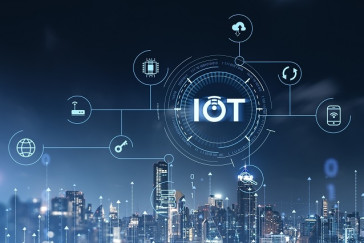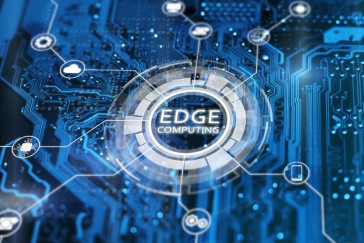What Is the Role of IoT in Smart Cities? Explained Simply

Simply put, IoT is basically the structure of interconnected devices, sensors, and software communicating with each other as well as with central systems to gather and exchange data in real time. IoT and smart cities are growing exponentially worldwide to assist in implementing local governance for better services, less environmental impact, and an overall better quality of life. The incorporation of AI into IoT for smart city applications has made cities more adaptive and intelligent in themselves, so they can better service their residents with more efficiency and with a forward-looking approach to need.
1. Smart Traffic Management
Road traffic is among the most aggravating phenomena in urban areas today because of its productivity loss, higher fuel consumption, and environmental pollution. Traffic management was mainly done using fixed schedules and manual intervention. However, with the advent of IoT, traffic systems have become dynamic and data-oriented.
The traffic situation is monitored through an assembly of IoT devices set up alongside and throughout the road. These may be road-embedded sensors, vehicle GPS systems, or intersectional cameras. Data on traffic flow, vehicle speeds, and congestion points are obtained in real-time. This data is then fed to AI to automatically change the timings of traffic lights, or route the traffic, and at several occasions, warn drivers about alternative routes on mobile apps. This real-time IoT-based response is an excellent example of IoT in smart cities, thus reducing travel time and decreasing vehicle emissions.
Learn More: IoT Edge Computing: The Future of Real-Time Data Processing
2. Efficient Waste Management
Another highly efficacious but lesser-known job executed by IoT and smart cities in waste management. Overflowing bins and irregular collection have long been plaguing many cities. By installing fill-level sensors into public trash bins, city departments can know which bins are already full and which ones need picking up urgently.
This system enables city services to plan more efficient waste collection routes, which reduces fuel consumption, operational costs, and greenhouse gas emissions. Additionally, the data collected helps understand waste generation patterns, which can inform better recycling and sustainability strategies. Smart city and IoT solutions not only improve cleanliness but also streamline municipal operations in ways previously impossible.
3. Smart Parking Solutions
Finding a parking spot in the bustling city can be more time-consuming and fuel-consuming, thereby creating an annoying experience for car drivers. Here is how IoT and smart cities come together to propose smart parking options. These sensors from an IoT system directly installed into parking slots will be able to detect occupancy in real-time and pass the information onto some central database.
Drivers can then go ahead and view parking spaces available near them using mobile applications, thereby saving much time and reducing the need to drive around searching for a space. Additionally, the city planners can use the data to study the demand trends for parking and decide on improvements to infrastructure that would address the problem. IoT in smart cities works best when the technology offers a mode for easing human life while simultaneously reducing environmental impact.
4. Energy Management
Energy consumption in cities is enormous, and inefficient energy use leads to waste and increased costs. What is the role of IoT in smart cities when it comes to energy? It's about optimizing energy usage without compromising comfort or function.
With IoT-enabled smart meters, cities can monitor electricity and water consumption in real-time. For instance, smart streetlights could dim or turn off on their own, in response to ambient light or passing pedestrians. Heating, cooling, and lighting in public buildings could be managed in accordance with occupancy data. This kind of precision cuts down tremendously on energy waste and fosters the sustainability goal of the city. Moreover, with AI and IoT for smart city applications, cities could identify peak demand times and even proactively shift energy distribution away during peak times, thereby averting power outages and alleviating stress on the grid.
Check This out: Get The Best 5G Network Expansion News And Latest Updates
5. Environmental Monitoring
Cities face a gamut of environmental problems, including air and water pollution, noise pollution, and the heat island effect. Traditional environmental monitoring systems have limited scope and usually do not provide timely data. Enter IoT devices.
Now, tiny sensors could be scattered around the city to keep tabs, on an ongoing basis, over environmental parameters such as air quality, humidity, temperature, noise levels, and water contamination. Such information is critical to taking actions like public health advisories on spikes in air pollutant levels or steering the formation of policies on traffic restrictions and industrial emissions. The AI and IoT combo for smart city applications thus stands to guarantee these data are collected and evaluated to yield actionable insights as well.

6. Public Safety and Surveillance
Public safety is a top priority in every urban area, and IoT technology is helping law enforcement and emergency services improve their response times and preventive measures. Surveillance cameras equipped with facial recognition and motion detection technology are now being deployed throughout many cities.
Some other types of cameras with IoT can detect suspicious behavior, identify wanted criminals by faces, and alert authorities in time. Also, emergency systems are connected and include alarms and panic buttons in public spaces to ensure faster response times during emergency conditions. In some cases, IoT sensors monitor earthquakes, floods, or fires in disaster-prone areas and alert emergency agencies in real time. Here, the presence of IoT in a smart city takes life-saving significance and hence lands comfort to both the citizens and the administrators of the city.
7. Smart Water Management
Water is one of our most precious resources; water wastage is a grave concern in many cities. Leaks in underground pipes, excessive water consumption, and unequal distribution are big problems. Smart city and IoT solutions now offer a better way to manage this valuable resource.
IoT sensors connected to the water system can detect leaks, monitor water quality, and measure usage levels at private homes, commercial places, and public utility facilities. AI further makes it possible to forecast peak demand, notify maintenance needs to authorities, and give suggestions to conservation methods to consumers. So, what does IoT do for smart cities concerning water? It is about converting a traditionally inactive system into an active, responsive, and sustainable one.
8. Connected Public Transportation
Public transportation is the backbone of urban mobility but often suffers from inefficiencies and poor user experience. IoT is revolutionizing transit systems by offering real-time visibility and enhanced user engagement.
GPS and other sensors track location, passenger counts, and maintenance needs in buses, trains, and subways. There are various apps that commuters can use to check out live arrivals, delays, or alternate routes. This data helps transport authorities better manage their fleet operations and provide even vehicle attachment during peak hours. In doing so, IoT and smart cities come together to build a transportation system that is smarter, reliable, and more needy to the public.
9. Smart Buildings and Infrastructure
Urban buildings, whether residential, commercial, or government-owned, consume about half of city resources. IoT devices embedded in these buildings assist in the effective management of these resources. From smart thermostats and lighting to occupancy sensors and maintenance trackers-all these contribute to the efficient management of a building.
For example, a smart HVAC system can adjust heating and cooling based on room occupancy, while predictive maintenance sensors can alert building managers about equipment failures before they happen. This saves energy, reduces costs, and enhances the comfort of occupants. The role of IoT in smart cities extends into the very walls of the buildings we live and work in, promoting sustainability from the ground up.
10. Data-Driven Decision Making
The true power of IoT strategically applied in a smart city is its ability to generate and capitalize on the volume of data. However, data is of no use unless it is interpreted. This is where artificial intelligence plays its role. Thus, the combination of AI and IoT for smart city applications is very effective in letting cities make data-driven informed decisions.
At the core of this intelligent analysis is the ability to go from resource allocation and budgeting to predicting upcoming urban needs so that governments can act upfront rather than after. In situations such as configuring public transit along usage routes or setting up infrastructure needs, the data pulled out from the IoT helps the decision-making teams implement changes better and more accountable.
Also Read: Explore All the Latest Technology Trends of the Year 2025
Conclusion
IoT helps smart cities create a responsive, frugal, and eco-friendly urban environment. In essence, integrating IoT with smart cities point toward real-time solutions to an age-old set of problems: traffic, wasting, pollution, safety, and energy use. When coupled with AI, AI and IoT for smart city applications generate much more powerful intelligent insights toward smarter decision-making and management of resources. As urban centers progress, the demand for better infrastructure and amenities will only grow. That is why the role of IoT in smart cities is not just of importance-it is of future necessity.
This content was created by AI





